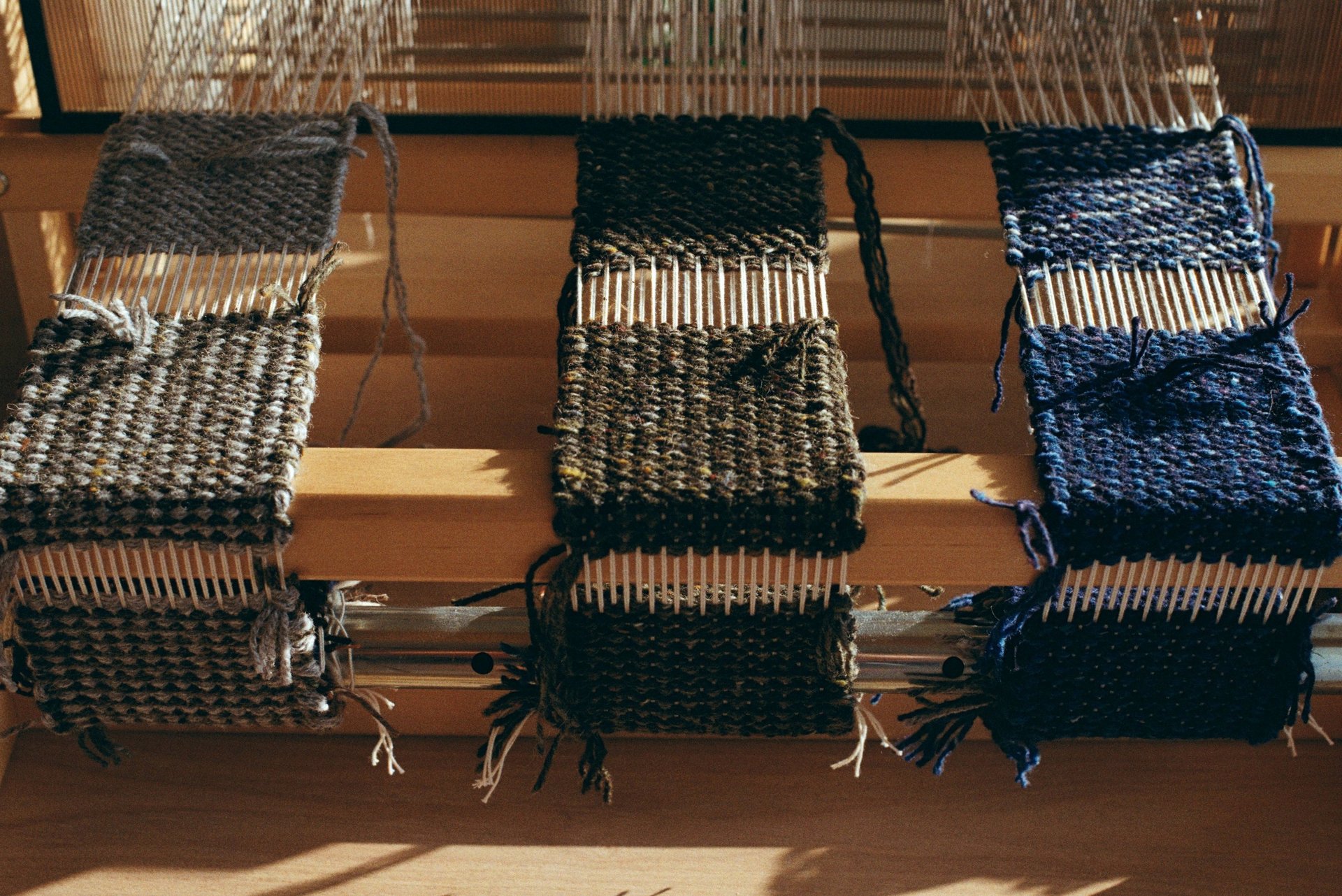
Rewoven threads: Embracing Zero Waste in Weaving
AUGUST 10, 2025
At the heart of every weaving project lies a story — not just of the finished piece, but of the materials, the hands that crafted it, and the journey it has taken. For us, that story doesn’t end when a project is complete. Instead, it transforms and continues, thanks to the colorful scraps of yarn left behind.
Weaving inevitably creates offcuts — little lengths of yarn too short for the next warp, or leftover cones with only a handful of meters left. To some, these might seem useless, destined for the bin. But in our studio, every fiber has value. We carefully gather and store these remnants, knowing that they hold the seeds of future creations.
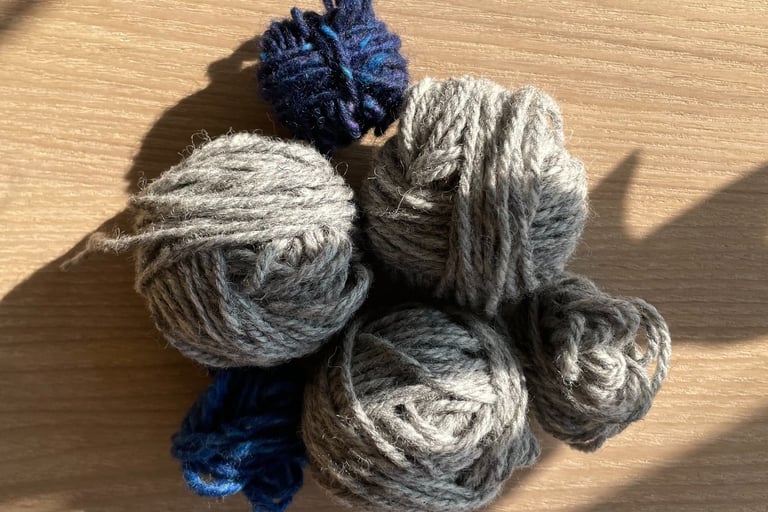

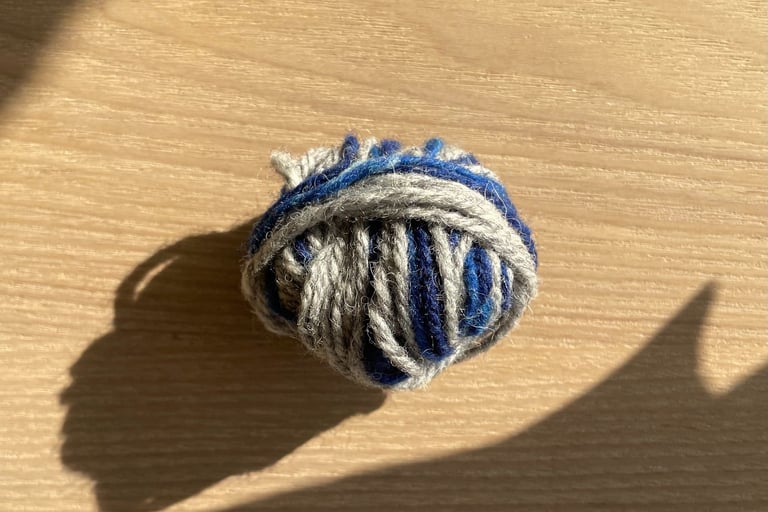

Our zero waste approach isn’t only about avoiding waste — it’s about seeing possibility in limitation. Scrap yarn can become small woven samples for testing colors, patterns, and structures before a larger project begins. These experiments often spark unexpected ideas, influencing the design of future collections. Sometimes, the scraps grow into something much bigger — entirely new pieces, rich in texture and layered with the history of past weavings.
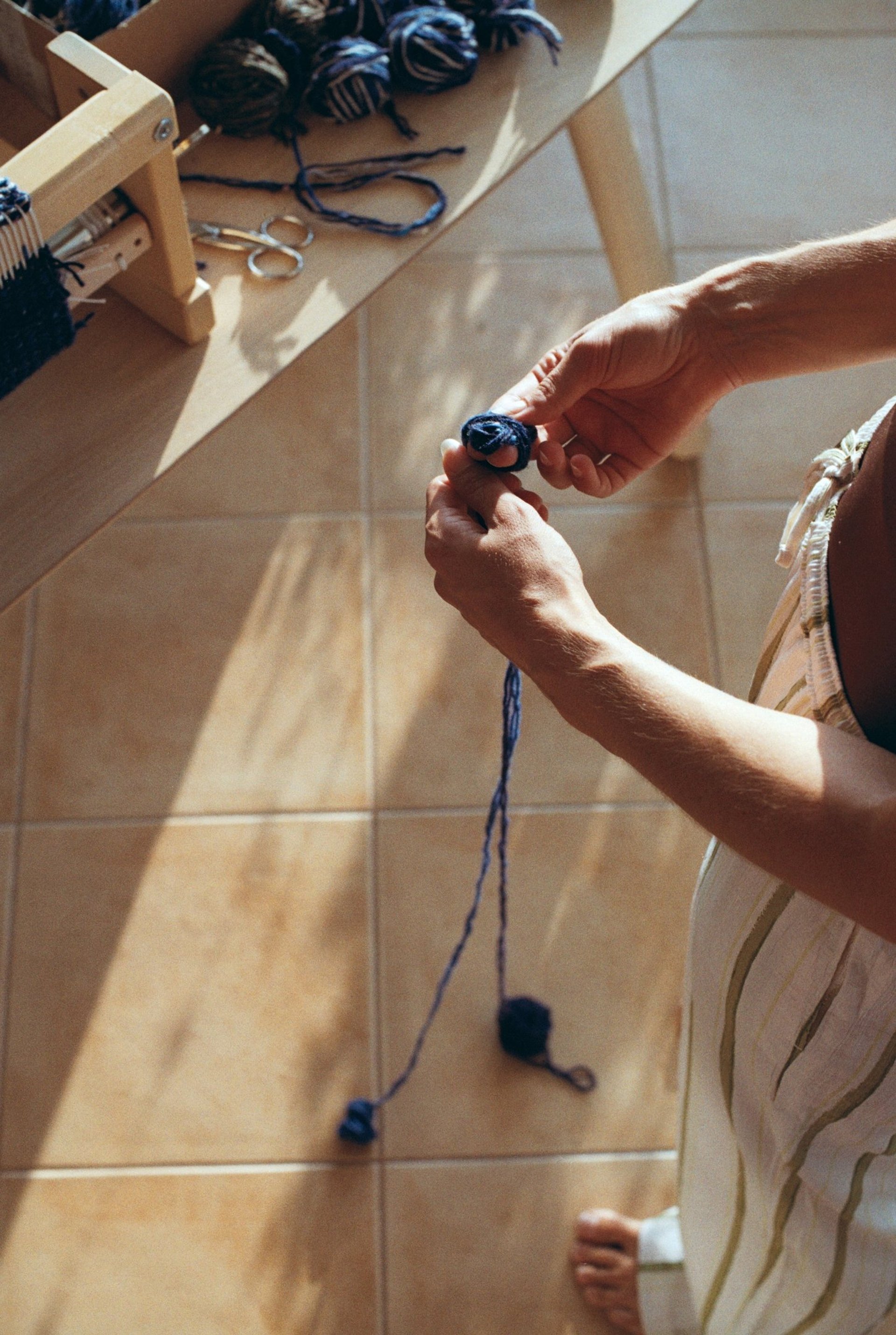
Using scrap yarn requires patience and adaptability. Sometimes we must experiment with unexpected colour combinations or textures, allowing the materials to guide the design. The results are unique, imperfect, and full of character — much like the journey itself.
We create these works on our 8-shaft table loom, a compact version of the traditional countermarch loom. This smaller loom gives us the flexibility to experiment without committing to a full-scale production warp, allowing us to explore quickly and intuitively.
Working on it feels like sketching in yarn — the perfect space to play, test, and innovate.
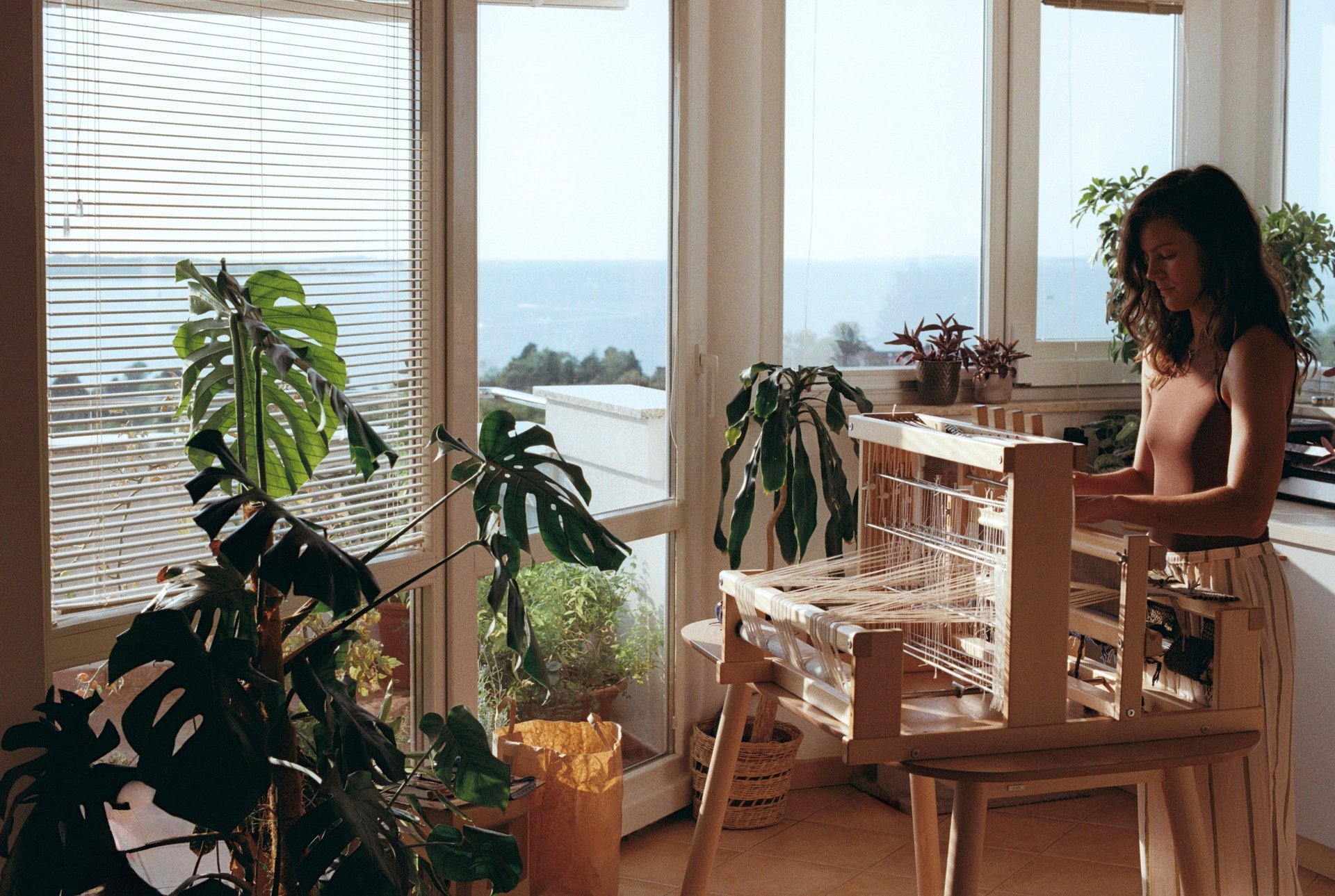
This practice reminds us that sustainability is not a separate act but a way of thinking, a way of working. Every yarn tells a story — even the smallest thread can carry the weight of a new creation.

Join us on social media for a glimpse into weaving, nature, and the hands that craft it.
@gaiamarini_woventextiles
Rewoven threads: Embracing Zero Waste in Weaving
AUGUST 10, 2025
This practice reflects our deeper commitment to respect the materials, the environment, and the art of weaving. It reminds us that beauty can emerge from what might seem discarded, and that every thread has a place in the story we’re weaving together.
At the heart of every weaving project lies a story — not just of the finished piece, but of the materials, the hands that crafted it, and the journey it has taken. For us, that story doesn’t end when a project is complete. Instead, it transforms and continues, thanks to the colorful scraps of yarn left behind.
Weaving inevitably creates offcuts — little lengths of yarn too short for the next warp, or leftover cones with only a handful of meters left. To some, these might seem useless, destined for the bin. But in our studio, every fiber has value. We carefully gather and store these remnants, knowing that they hold the seeds of future creations.
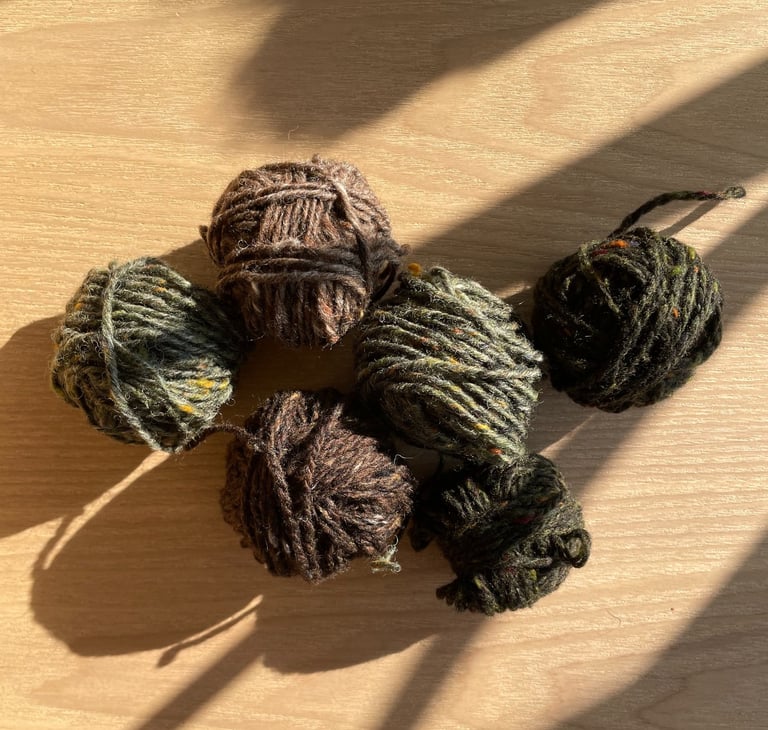



Our zero waste approach isn’t only about avoiding waste — it’s about seeing possibility in limitation. Scrap yarn can become small woven samples for testing colors, patterns, and structures before a larger project begins. These experiments often spark unexpected ideas, influencing the design of future collections. Sometimes, the scraps grow into something much bigger — entirely new pieces, rich in texture and layered with the history of past weavings.
Using scrap yarn requires patience and adaptability. Sometimes we must experiment with unexpected colour combinations or textures, allowing the materials to guide the design. The results are unique, imperfect, and full of character — much like the journey itself.
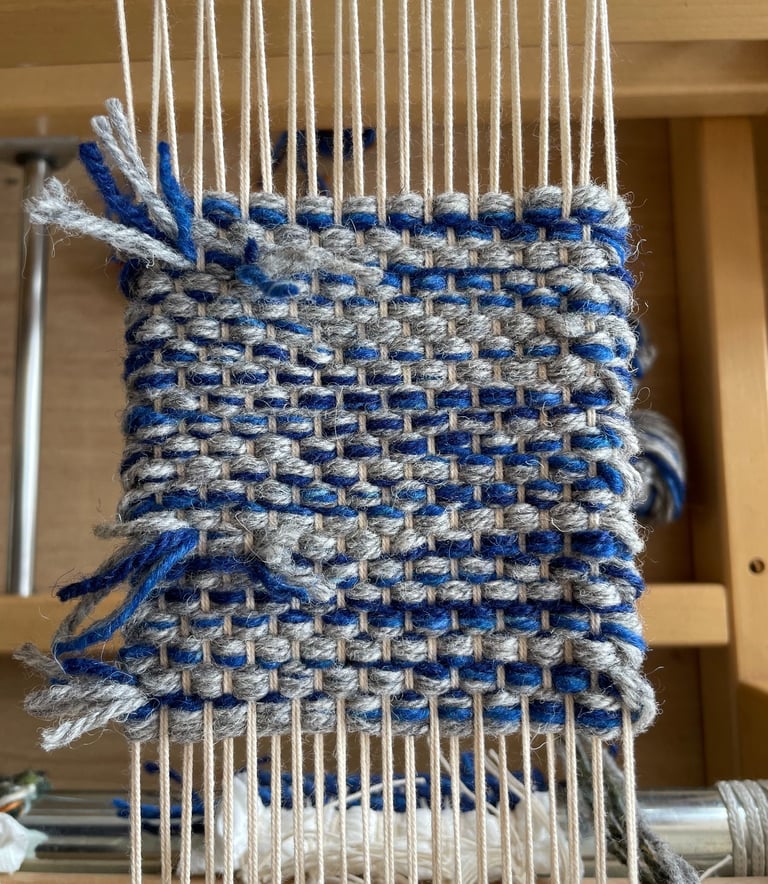

Using scrap yarn requires patience and adaptability. Sometimes we must experiment with unexpected colour combinations or textures, allowing the materials to guide the design. The results are unique, imperfect, and full of character — much like the journey itself.
We create these works on our 8-shaft table loom, a compact version of the traditional countermarch loom. This smaller loom gives us the flexibility to experiment without committing to a full-scale production warp, allowing us to explore quickly and intuitively. Working on it feels like sketching in yarn — the perfect space to play, test, and innovate.
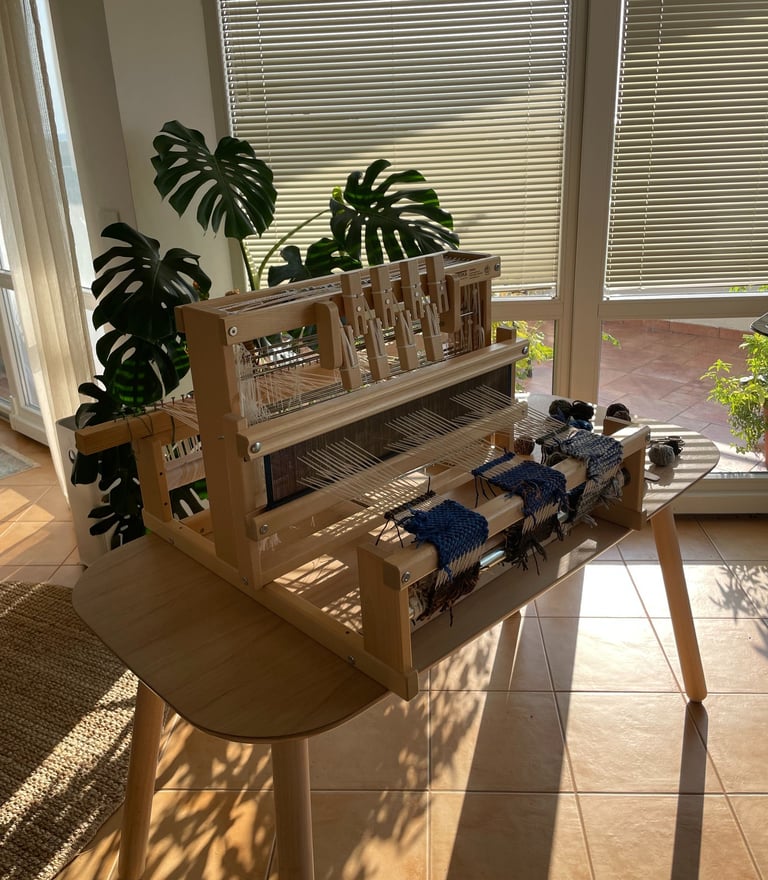





This practice reminds us that sustainability is not a separate act but a way of thinking, a way of working. Every yarn tells a story — even the smallest piece deserves its place on the loom.

Join us on social media for a glimpse into weaving, nature, and the hands that craft it.
@gaiamarini_woventextiles

